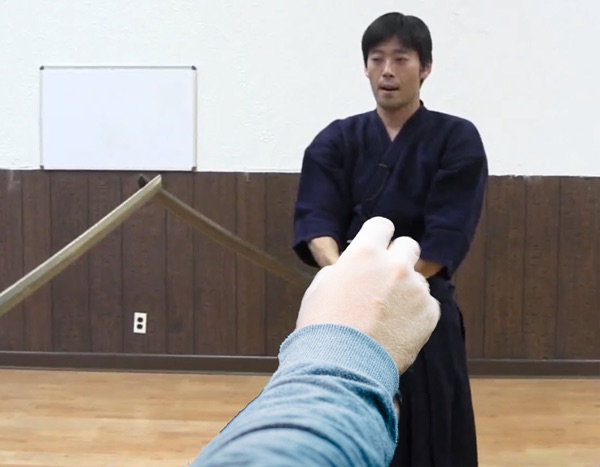You Got It!
5 Steps to Control Your Own Body to Gain More Control Over Your Sword
This is not only about kendō so if you learn this you can use those for something else too.
 Do you fine-tune your kendo?
Do you fine-tune your kendo?These 5 steps are what I learned through more than 24 years of instructing kendō and being a student of kendō for more than 38 years (as of 2018).
The core of these steps is…
“Kendō is not about how to control your sword. It is about how to control yourself.”
So if you are a beginner or trying to reach at a higher level, these steps might help you to get there.
- Learn to feel how your body works
- Learn how you can move your body
- Learn how it looks like when you move your body
- Learn how to fine-tune your body
- Learn how your emotion affects your movements
1. Learn To Feel How Your Body Works
 Can You Feel and Connect?
Can You Feel and Connect?After having seen many beginners, I have found that they do not know how to communicate with their body.
Without knowing how to communicate with the body, you cannot control your sword, bokutō or shinai.
Most of beginners try to control their sword. When they try to control their sword, almost all the time they become tense. Since they are tensed up, their body cannot move as it is supposed to.
This is the other way round: Move your body so your sword follows.
But to do so you should connect to your body. You need to feel how your body works so focus on your body, not on your bokutō or shinai.
2. Learn How You Can Move Your Body
Since many focus on how to move their sword, they do something funny with their body such as twisting their right arm and body to strike the right dō.
They are trying to turn their sword. But at the same time, they are turning their arm and body, which is not necessary.
All they have to do is to turn their forearms. When they turn forearms, their wrists turn too.
It is about how to use your body.
3. Learn How It Looks Like When You Move Your Body
 Are you aware of how you look?
Are you aware of how you look?You connect to your body and know how to move it. Now it is time for you to learn how it looks like when you move your body correctly.
You should know how it looks like when you do things right so next time you try it again you can check it yourself.
You should check your movements by how it looks like and how it feels like; inside and outside. That is why you see many sensei spend a lot of times in front of the mirror. Not because they are narcissists.
4. Learn How to Fine-Tune Your Body
Fine-tuning requires really small jobs. You might want to move your left foot 1.5cm (0.59 Inch) forward and 1cm (0.39 Inch) closer to the right foot.
If you do it, it feels different.
You might want to change the position of your left thumb when you take chūdan.
These may be for the advanced but I want you to know this “fine-tuning” makes your kendō better.
You should be able to fine-tune your kendō after you learn how to connect your body and know how to move your body.
5. Learn How Your Emotion Affects Your Movements
 Too Scared to Strike? Happened to You Once Or Twice, Right?
Too Scared to Strike? Happened to You Once Or Twice, Right?Your emotions affect your kendō even just a little bit. You might think this is normal and nothing special. But… Not many realise it until someone points out that their kendō is a bit different.
It Is Harder To Keep Your Kendō Stable
You should pay attention to the state of your mind all the time.
Sometimes you do not feel energetic. Whatever the reason, you cannot do kendō as you always do.
When such things happen, don’t deny it. Face it and do the followings.
- You have to realise that your kendō is a bit off
- Find out why; is it physical or mental,
- Learn how to maximize your ability under such condition
Then your next job is to keep yourself stable outside the dōjō. You figure out what makes you feel less energetic outside the dōjō. What is it? And what can you do about it when that happens again.
This is why kendō is useful for you to improve your daily life too!
It is normal that your kendō performance gets worse when you are not feeling energetic. So…
- In kendō you should overcome that. Then…
- We should find out and overcome whatever that makes us feel less energetic.
Easier said than done. But that is why we are training!
Hope this helps with your kendō and life improvement!

